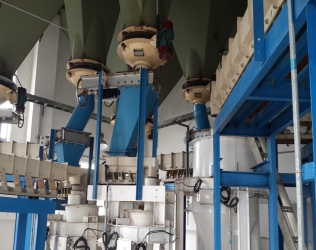


The components of the additive are compatible with the glass components, and can generate substitution reaction with the main material Cr2O3 at the same time, so as to promote the formation of fluorine Lenkel and Schottky thermal defects inside and on the surface of the Cr2O3 crystal under the heating state, activate the lattice of the main material, and accelerate the process of mass diffusion and surface diffusion of the material during the sintering process. Some components in the additive react with Cr2O3 to form a solid solution, which is crystallized from the melt and deposited at the grain boundaries of Cr2O3 grains to form an annular crystal band, thus controlling the growth of Cr2O3 grains, strengthening the combination between main crystals and improving the strength of products. Based on the above considerations, many additives were selected for experimental research. Here, two representative additives were selected for comparison, one is additive A, and the other is compound additive B..
Effect of additives on the properties of products. The sintering of Cr2O3 can be significantly promoted at a lower temperature, and products with physical and chemical indexes reaching or exceeding similar advanced products can be obtained. In order to fully sinter Cr2O3 at low temperature, two technologies are adopted:
(1) Improving the fineness of Cr2O3 as much as possible on the premise of not affecting the finished product firing rate. Because the finer the particle size, the greater the distortion degree and curvature radius of the grain, the higher the activity of the material and the greater the self-diffusion ability;
(2) An additive with an ion radius close to that of Cr3+ is introduced, so that it can be sintered to form a continuous solid solution and a finite solid solution within a suitable oxygen partial pressure range, which destroys the orderly arrangement of Cr atoms and leads to the change of the potential field around the introduced atoms, thus causing the distortion of the periodic potential field in Cr2O3 crystals, accelerating the self-diffusion speed of Cr ions and promoting the sintering of Cr2O3 materials.